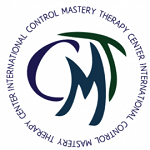- Have any questions?
- 510-612-6392
- infocmtcenter@gmail.com
What is Control Mastery Theory- The Dance of Psychotherapy ( a paper written by Jessica Broitman and presented by Jessica Broitman and Ginger Rhodes Cuba 2016)
June 26, 2017Where did RESISTANCE ANALYSIS come from and go?
July 4, 2017These concerns came from Freud’s early desires to be rational – in response to hypnotism. Weiss views one’s conflicts as being over goals and pathogenic beliefs. Therapists must take the side of the patient’s goals. Surface issues are not seen as resistances, rather tests of pathogenic beliefs.
What about reassurance, or the use of your authority?
Any particular stance could be helpful or patronizing, infantilizing or humiliating, all depending upon whether the patient was rejected by his parents or intrusively demanded to perform. You must be case specific and be willing at times to go to unusual extents to help your patient feel connected. Sometimes this could include daily phone calls. Patients who are not protected will require you to use your authority to protect them.
A CORRECTIVE EMOTIONAL EXPERIENCE might be in your patient’s best interest!
The CMT therapist should consider offering a corrective emotional experience in a context within the patient’s history. This will not strengthen the defenses or gratify the impulses; it will not deny the patient’s motivation to heal because of the concept of testing. You have a new way to understand what the patient is trying to accomplish. This is not a role-play. Expressions of empathy are appropriate; acting detached or withdrawn is as much of a role-play as being flexible and changeable.
